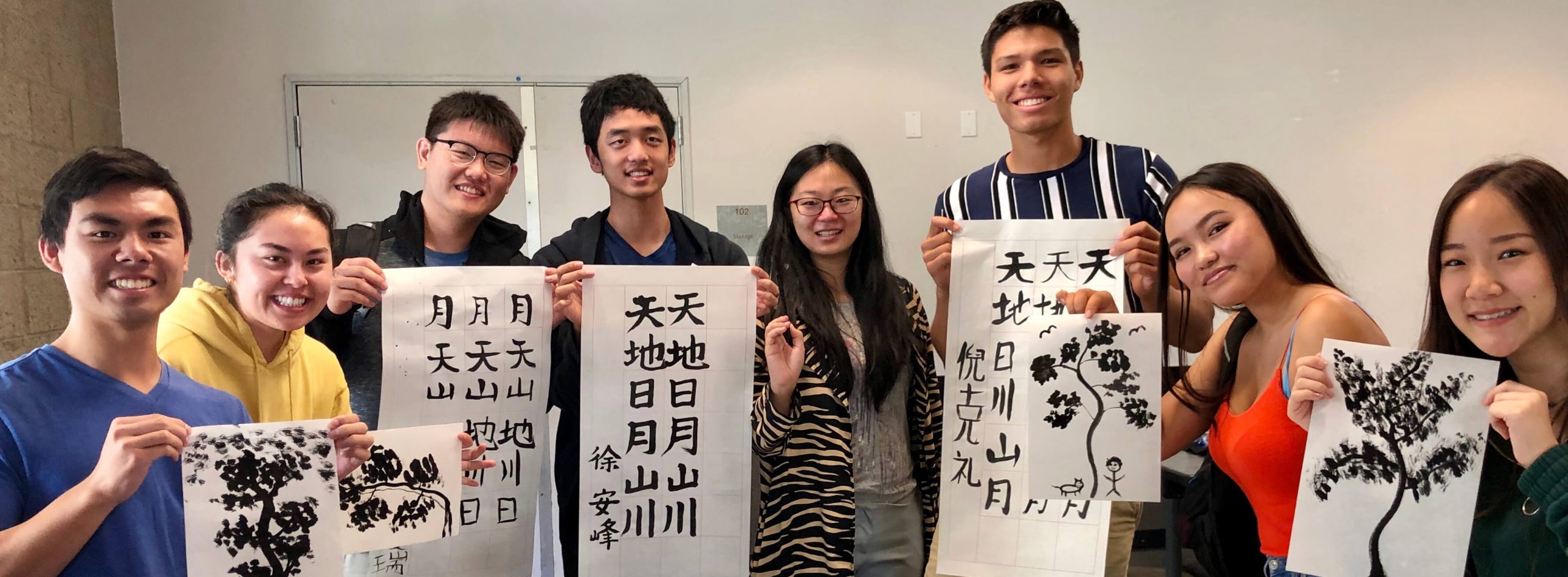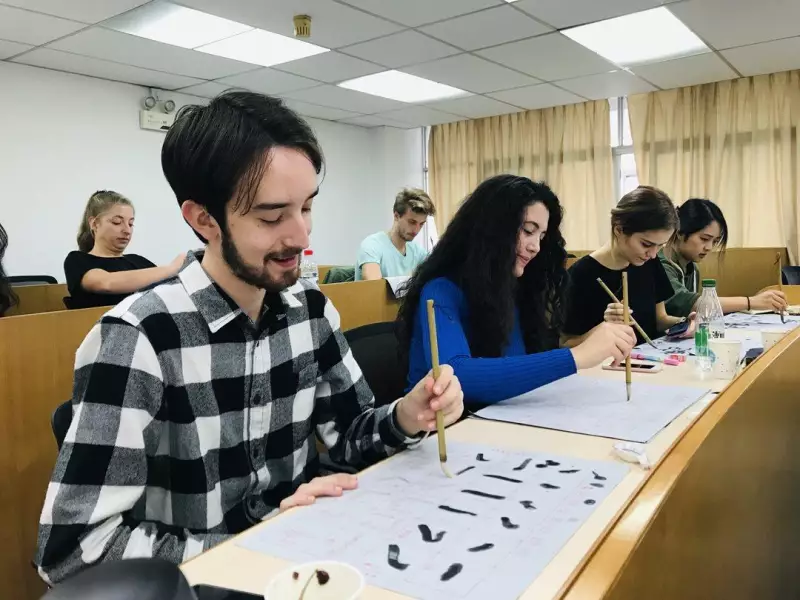Chinese Language is known as one of the most difficult languages to learn in the world, especially the Chinese words writing. Unlike the 26 English letters, Chinese words have a complicated writing system. One Chinese word is made up of several parts, and it would be difficult for beginners to put them together, letting alone making it look beautiful enough. However, this is what makes Chinese letters unique. Chinese people enjoys competing their Chinese calligraphy skills, which is also an important Chinese language test evaluation standard. Chinese calligraphy is a glorious treasure to be appreciated worldwide, and there have been always great Chinese calligraphers with unique styles. This article will introduce to you the Chinese calligraphy and the great calligraphers in Chinese history.
Chinese calligraphy has a long and rich history of over 3,000 years. It developed based on Chinese characters and has been an important art form in China since ancient times.
The development of Chinese calligraphy can be divided into several phases.
- The origin of Chinese calligraphy dates back to the Shang Dynasty (1600-1046 BC). Characters were found on animal bones and bronzes, mainly using the pictograph and ideograph methods. In the Zhou Dynasty (1046-256 BC), the dazhuan and xiaozhuan scripts emerged, indicating the maturity of calligraphy. Calligraphy was crucial for state affairs and intellectual pursuits.
- The Qin (221-206 BC) and Han (206 BC – AD 220) Dynasties witnessed the development of the kai, li, and xing calligraphic scripts from the seal script. Notable calligraphers include Cai Yong and Dong Zhongshu. Their styles demonstrated the balanced, rhythmic and structural features of Han calligraphy.
- Calligraphy flourished in the Wei Jin (220-420) and Southern and Northern Dynasties (420-589). Wang Xizhi was a sage of calligraphy, known for his poetic and melodic cursive script. His “Preface to the Orchid Pavilion Collection” set the standard for later generations. The regular, running and cursive scripts were mature, representing the achievements of calligraphy.
- The Sui (581-618) and Tang (618-907) Dynasties were a golden age for calligraphy. Diverse scripts including regular, running, cursive and semicursive styles were developed and perfected. Yan Zhenqing and Liu Gongquan were respected for their masterful regular script. Zhang Xu and Huai Su pioneered the wild cursive and running styles. Calligraphy was closely associated with painting, poetry and seal carving.
- In the Song (960-1279) and Yuan (1271-1368) Dynasties, calligraphy emphasized creative self-expression. Su Shi and Mi Fu were renowned for their cursive scripts, conveying a natural and unrestrained spirit. Zhao Mengfu mastered regular, running and cursive scripts, fusing elements of high antiquity and Tang-Song traditions.
- The Ming (1368-1644) and Qing (1644-1911) Dynasties saw increasingly individualistic and unorthodox calligraphic styles. Dong Qichang put forward theories about calligraphic traditions. The “Four Wangs” (Wang Duo, Wang Xianzhi, Wang Xun, Wang Feng) were noted for precise and elegant styles. Jin Nong and Youren were famous for exaggerated and unconventional scripts that broke away from tradition.
Chinese calligraphy is one of the most important arts in traditional Chinese culture. It has been renowned worldwide for its artistic expression and aesthetic value. Chinese calligraphy emphasizes expressiveness of lines, liveliness of compositions and harmony of the overall layout. Masterpieces of Chinese calligraphy are considered national treasures and represent the highest achievement in this art form.
One of the most famous Chinese calligraphers was Wang Xizhi of the Eastern Jin Dynasty. His masterpiece “Preface to the Orchid Pavilion Collection” (兰亭序) is regarded as the pinnacle of Chinese calligraphy. Written in cursive script, it features bold and unrestrained strokes, conveying a carefree and melodic rhythm. Wang Xizhi’s calligraphy has been influential for generations and he is revered as the “Sage of Calligraphy” (书圣) in China.
In the Tang Dynasty, notable calligraphers include Chu Suiliang, Zhang Xu and Yan Zhenqing. Chu Suiliang was an expert in regular script, with calligraphy that was delicate, carefully crafted and well-proportioned. Zhang Xu pioneered the wild cursive script. His calligraphy was unconstrained and beatifully grotesque, representing a more individualistic style. Yan Zhenqing’s calligraphy balanced precision and fluency. His “Duobao Pagoda Stele” combines dignified regular script and flowing cursive style, which became a model for later scholars.
In the Song Dynasty, Su Shi and Huang Tingjian were two of the most influential calligraphers. Su Shi was skilled in all scripts but especially known for his running and cursive styles. His calligraphy conveyed a carefree and natural spirit. Huang Tingjian was a master of cursive script, using bold and energetic strokes with a forceful momentum. His style symbolized the forthright personalities of scholars in the Song Dynasty.
Ming Dynasty calligraphers include Wang Duo and Wen Zhengming. Wang Duo was adept at Zhongyuan’s “Slender Gold” style, featuring characters that were elongated yet balanced, elegant and highly decorative. Wen Zhengming combined delicacy and liveliness, using simple but powerful strokes. His calligraphy had a graceful flow with restrained ornamentation.
In the Qing Dynasty, the “Eight Eccentrics of Yangzhou” including Jin Nong were renowned for their innovative and individualistic styles. Jin Nong was renowned for calligraphy with exaggerated and unconventional strokes, representing a new creative spirit as genres were fused together. His style signified a breakthrough from orthodoxy in the Qing Dynasty.
The great Chinese calligraphy works of art have always been greatly appreciated, and Chinese calligraphy has been an unbroken tradition cultivated and innovated by distinguished artists over thousands of years. It represents the peaks of aesthetic achievement and self-expression in Chinese culture. Masterpieces of Chinese calligraphy demonstrate the vision, skill, creativity and passion of artists across different ages. They form an integral part of China’s artistic heritage.











